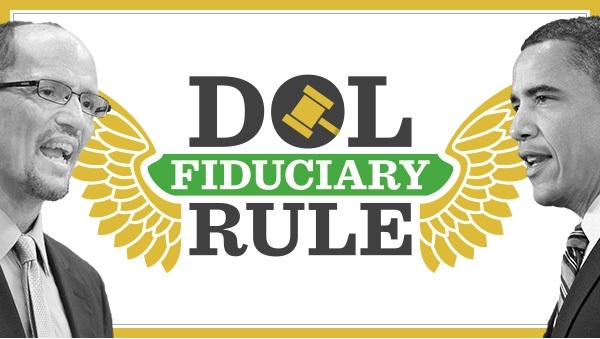Eight years ago this weekend my father passed away in a horrible car crash. My brother Tim and I worked diligently to settle items in the estate, closing down a plastic surgery practice, dealing with fallout from various business interests, winding up the domestic relations order from his recent divorce and working through the probate process. All this took over three years even though our father had originally planned well and drafted appropriate legal documents. Unfortunately what was left uncompleted after the original legal work was finished made our work much more difficult than it could have been.
Not much of the estate was able to avoid the probate process and this was further complicated by a woman we hardly knew and a former employee of his who claimed against the estate.
Insurance had been obtained by my father to help pay the estate taxes, but title was never transferred into the trust set up years before. Our ex-step mother was uncooperative during the funding process and the insurance eventually became estate taxable.
We were lucky that my father’s remaining retirement could pass without having to go through probate. These assets could have been used to help pay taxes, but liquidating IRAs and other retirement assets would have caused further income taxes. Obviously pulling funds and paying significant income taxes was not the most advantageous way to pay estate taxes. With the insurance unavailable, taking out a loan was the best option in this case. The loan became necessary until my father’s home sold because we had to hire attorneys to deal with one of my father’s former employees and a lady we did not know prior to 2008.
After this experience my brother and I went through, I vowed to do everything in my power to make sure our clients and their children would not have to endure a similar experience. This is why we work hard with clients to make sure estate planning is implemented after the legal work is completed. This is why we work hard to educate, explaining how the legal work is just the first step of the estate planning process. This is also why we are adamant that clients check and recheck beneficiary documents, declaring beneficiaries and contingent beneficiaries on everything they can that has not been transferred into a trust.
This also served as the genesis for our WealthFitTM process.
Recently we have been hosting a workshop on how to best transfer retirement assets to the next generation, how to reduce and avoid taxes on distributions and how to protect client’s loved ones from some of these potential issues that my brother and I had to deal with, especially as it relates to retirement assets.
Click here for more information on the Inherited IRA workshop.

When my father passed away, he had an old retirement plan left over from when he had been an adjunct professor within the University of Tennessee school system and headed up the training program for residents at Erlanger Hospital. When my brother and I researched the beneficiaries for this retirement plan, the document was so ancient that it had to be retrieved from microfiche. Once we were able to determine we were the remaining beneficiaries, we worked hard to set up beneficiary IRAs from this retirement plan. This was easier said than done, however.
When I originally called the custodian that housed the plan, I was told they would send us some paperwork, which we received in a couple of weeks. The only option listed on the paperwork was to liquidate the plan and pay taxes. Not only did we not want to receive the funds directly and pay the taxes, but liquidating at that time would probably have been the worst time to have liquidated a retirement plan in our entire lifetimes.
In 2008, as is the case most years, September was the worst month of the year. Lehman brothers had just collapsed, and Congress was refusing to work with the Treasury Department to provide stability to the markets and the economy. It seemed they were more concerned about their personal quests for power and influence than the welfare of the country. Obviously we did not get to choose when our father passed away. We did not wish to compound the stress of a well planned estate plan that had fallen apart due to multiple complications with the worst market collapse since the great depression. However, these were the cards we were dealt and we played them as best we could.

We obviously did not want to fill out the liquidation paperwork, but we found it exceedingly difficult to obtain the correct paperwork. After talking with the customer service “help” desk for the retirement plan’s custodian, they decided that we needed to talk with a team in Atlanta. We expressed over and over again that we wished to set up a “stretch IRA” or “beneficiary IRA” from the retirement plan but we were not able to get a call back. The government had passed the pension protection act of 2006 two years previously which allowed for stretch IRAs out of all retirement plans and we were concerned that the only option would be to receive a check, but we pushed forward knowing that if we could work out a way to have it transferred directly to an IRA, we could avoid having to pay all the taxes right away.
Eventually I was able to talk with a knowledgeable person in Denver who understood what we were trying to accomplish, did not opt to transfer us to another department, and was able to help. We were not able to set up a “stretch IRA” right away but were able to establish a “Stretch Annuity” for both of us at the company and were finally able to move this into our own “Stretch IRAs” in 2010.

It is said that we are never given a test that we cannot handle. It is also said that we can choose to use all that happens to us for good. The silver lining of this experience is that it has enabled us to help others much more effectively. We rarely encounter a client who is having to deal with as many issues at once. The experience gives me a sense of purpose to help others avoid these issues or pick up the pieces if we are being engaged after the fact.
This Thursday we will be having another session of our Inherited IRA workshop covering some of this. If you would like to get a DVD recording of this session or come to one in the future, please let us know.
Recently President Obama and his administration introduced sweeping reforms to give the Department of Labor increased powers to oversee and regulate all retirement plans including IRAs and Inherited IRAs (also known as beneficiary IRAs or Stretch IRAs). It is interesting that the Department of Labor seems to have jurisdiction over Inherited IRAs even though the Supreme Court officially ruled that they did not enjoy the same creditor protection provisions that 401ks, IRAs and other retirement plans did (they deemed these Inherited IRAs to not be retirement plans). Increased use of trusts has enabled those who plan ahead to still enjoy these protections, however.

Mr. Obama and the Department of Labor are mandating that anyone who is advising investors with regard to their investments inside any type of retirement plan must act as a Fiduciary. This means they must act “in the best interests of their clients”. We feel that this is the right thing for advisors to do, but also know that we are going to see a lot of change and increased regulation as a result of the Department of Labor entering into the arena already inhabited by the SEC and FINRA. There are a lot of cooks in the kitchen.
For most of our clients, there is little we need to change with regard to our service offerings. For any investors that are accustomed to paying commissions or buying products like annuities and certain types of mutual funds, you may be surprised to see how many expenses are imbedded in these products that you either forgot about or never realized. These annuities that are touted to have “no fees” will suddenly be required to display all the imbedded expenses.
We are working with our custodians at T.D. Ameritrade and LPL to eliminate transaction costs for our clients and will soon have modified fee schedules to showcase with these transaction fees removed. We are working toward helping our clients reduce some of these imbedded expenses while at the same time creating a level playing field which is easier to explain and is more transparent to our clients. We see a time when certain types of annuities, mutual funds and other types of investments may no longer be allowed in IRAs and retirement plans and we are actively working to stay ahead of the curve with regard to these changes.
As you may have noticed, we have recently been reducing our equity exposure, particularly in real estate and increasing our bond and cash position. Whereas we may not see the type of volatility we have become accustomed to in September and October of this year, having already experienced plenty of panic in January, February and June, we still feel it is worthwhile to keep some dry powder just in case.
Joe D. Franklin, CFP is Founder and President of Franklin Wealth Management, a registered investment advisory firm in Hixson, Tennessee. A 20+year industry veteran, he contributes guest articles for Money Magazine and authors the Franklin Backstage Pass blog. Joe has also been featured in the Wall Street Journal, Kiplinger’s Magazine, USA Today and other publications.
Important Disclosure Information for the “Backstage Pass” Blog
Please remember that past performance may not be indicative of future results. Indexes are unmanaged and cannot be invested into directly. Index returns do not reflect fees, expenses, or sales charges. Index performance is not indicative of the performance of any investments. Different types of investments involve varying degrees of risk, and there can be no assurance that the future performance of any specific investment, investment strategy, or product (including the investments and/or investment strategies recommended or undertaken by Franklin Wealth Management), or any non-investment related content, made reference to directly or indirectly in this blog will be profitable, equal any corresponding indicated historical performance level(s), be suitable for your portfolio or individual situation, or prove successful. Due to various factors, including changing market conditions and/or applicable laws, the content may no longer be reflective of current opinions or positions. Moreover, you should not assume that any discussion or information contained in this blog serves as the receipt of, or as a substitute for, personalized investment advice from Franklin Wealth Management. To the extent that a reader has any questions regarding the applicability of any specific issue discussed above to his/her individual situation, he/she is encouraged to consult with the professional advisor of his/her choosing. Franklin Wealth Management is neither a law firm nor a certified public accounting firm and no portion of the blog content should be construed as legal or accounting advice. A copy of Franklin Wealth Management’s current written disclosure statement discussing our advisory services and fees is available for review upon request.





